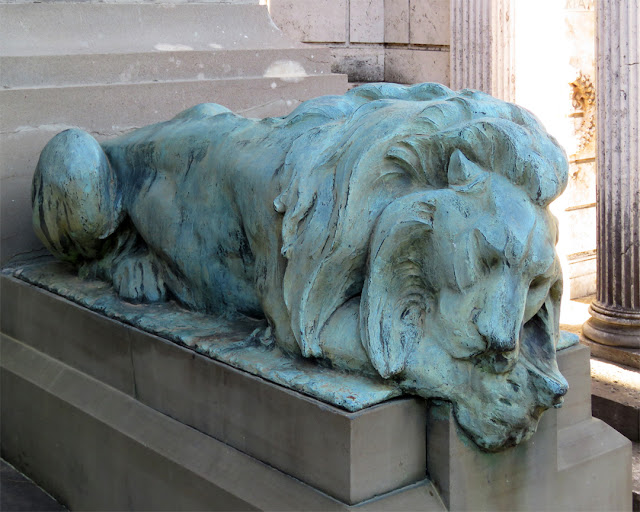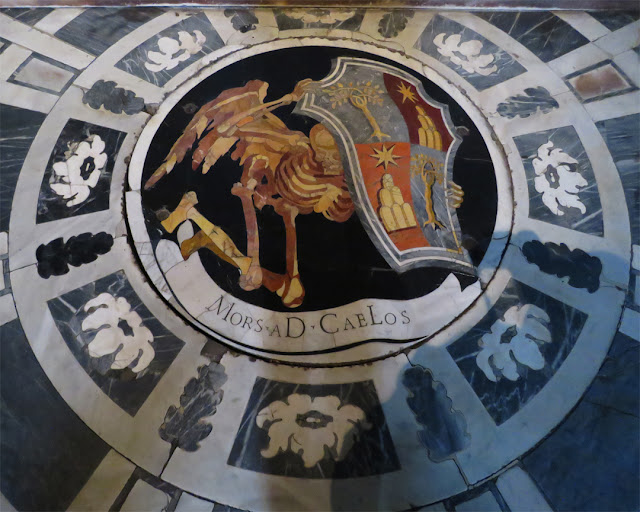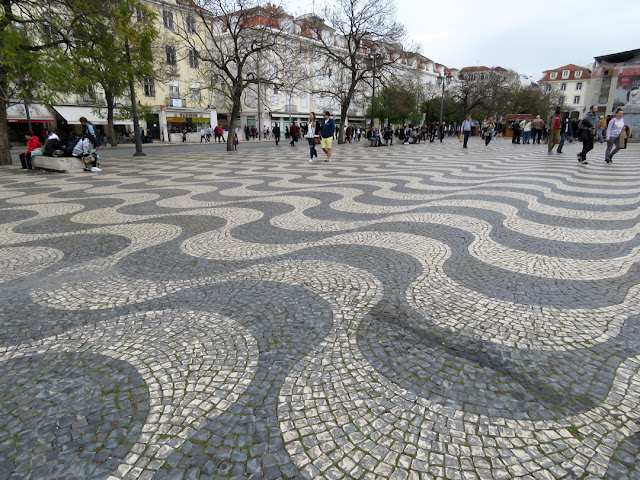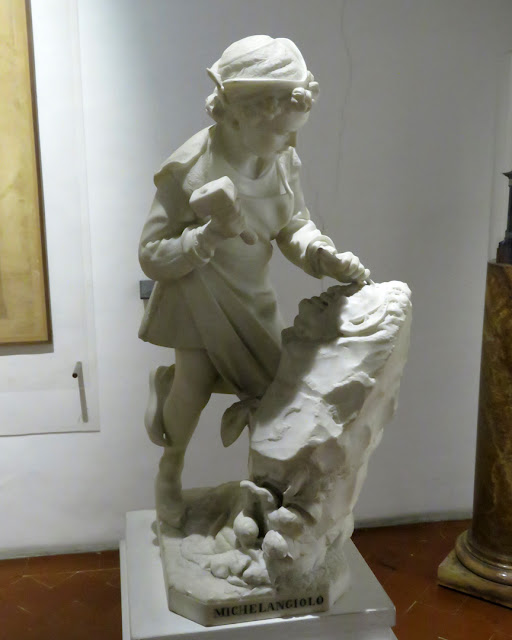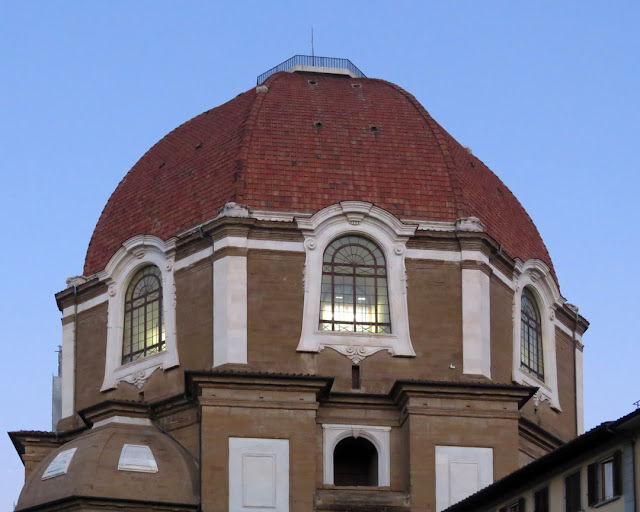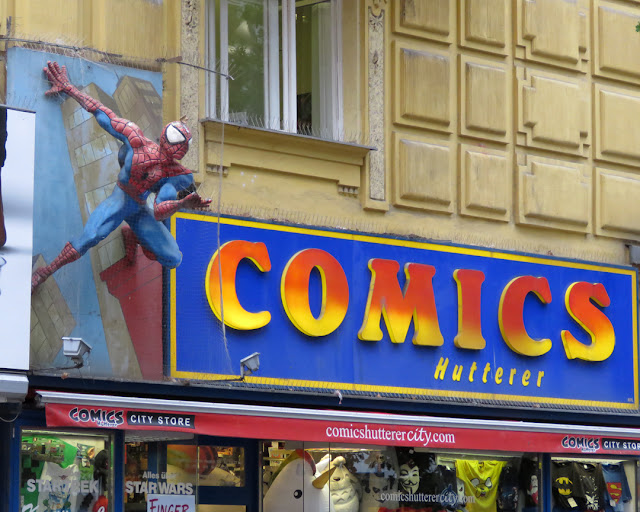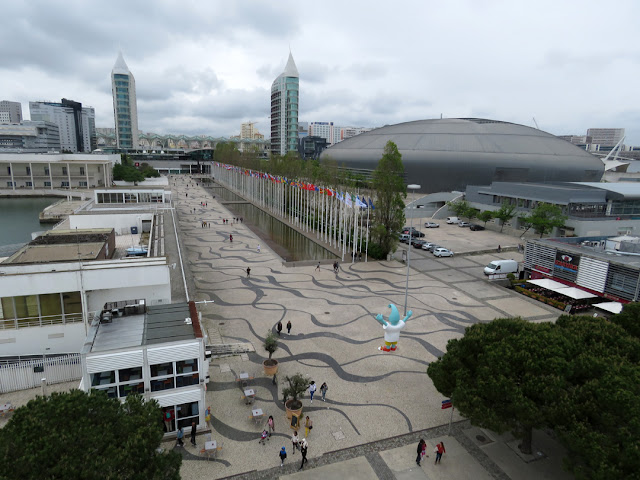Saturday, February 29, 2020
Coney Island Boardwalk
Riegelmann Boardwalk
Coney Island, Brooklyn
New York, September 2007
“The Riegelmann Boardwalk (also known as the Coney Island Boardwalk) is a 2.7-mile-long (4.3 km) boardwalk along the southern shore of the Coney Island peninsula in the New York City borough of Brooklyn, facing the Atlantic Ocean. Opened in 1923, the boardwalk runs between West 37th Street at the edge of the Sea Gate neighborhood to the west and Brighton 15th Street in Brighton Beach to the east. It is operated by the New York City Department of Parks and Recreation (NYC Parks). The Riegelmann Boardwalk is primarily made of wooden planks arranged in a chevron pattern. It ranges from 50 to 80 feet (15 to 24 m) wide and is raised slightly above sea level. The boardwalk connects several amusement areas and attractions on Coney Island, including the New York Aquarium, Luna Park, Deno's Wonder Wheel Amusement Park, and Maimonides Park. It has become an icon of Coney Island, with numerous appearances in the visual arts, music, and film. The boardwalk has been considered the most important public works project in Brooklyn since the Brooklyn Bridge, with an impact comparable to the Catskill Watershed and Central Park. By the mid-19th century, the Coney Island waterfront was divided among several private entities who erected barriers. Plans for a Coney Island boardwalk were first discussed in the late 1890s as a means of uniting the different sections of Coney Island, and as a revitalization project for these areas. The boardwalk, designed by Philip P. Farley, was named after Brooklyn borough president Edward J. Riegelmann, who led its construction. The Riegelmann Boardwalk's first portion opened in 1923, with further extensions in 1926 and 1941, as well as several modifications and repairs throughout the 20th century. After NYC Parks unsuccessfully attempted to repair the boardwalk with concrete in the early 21st century, the New York City Landmarks Preservation Commission designated the Riegelmann Boardwalk a city landmark in 2018.” (Riegelmann Boardwalk, Wikipedia)
Friday, February 28, 2020
Gertrude Stein
Grave of Gertrude Stein (1874-1946)
Cimetière du Père-Lachaise, (Père Lachaise Cemetery)
Quartier du Père-Lachaise, 20th arrondissement
Paris, July 2014
“Gertrude Stein (February 3, 1874 – July 27, 1946) was an American novelist, poet, playwright, and art collector. Born in Pittsburgh, Pennsylvania in the Allegheny West neighborhood and raised in Oakland, California, Stein moved to Paris in 1903, and made France her home for the remainder of her life. She hosted a Paris salon, where the leading figures of modernism in literature and art, such as Pablo Picasso, Ernest Hemingway, F. Scott Fitzgerald, Sinclair Lewis, Ezra Pound, Sherwood Anderson and Henri Matisse, would meet. In 1933, Stein published a quasi-memoir of her Paris years, The Autobiography of Alice B. Toklas, written in the voice of Alice B. Toklas, her life partner. The book became a literary bestseller and vaulted Stein from the relative obscurity of the cult-literature scene into the limelight of mainstream attention. Two quotes from her works have become widely known: ‘Rose is a rose is a rose is a rose,’ and ‘there is no there there’, with the latter often taken to be a reference to her childhood home of Oakland. Her books include Q.E.D. (1903), about a lesbian romantic affair involving several of Stein's friends; Fernhurst, a fictional story about a love triangle; Three Lives (1905–06); and The Making of Americans (1902–1911). In Tender Buttons (1914), Stein commented on lesbian sexuality. Her activities during World War II have been the subject of analysis and commentary. As a Jew living in Nazi-occupied France, Stein may have only been able to sustain her lifestyle as an art collector, and indeed to ensure her physical safety, through the protection of the powerful Vichy government official and Nazi collaborator Bernard Faÿ. After the war ended, Stein expressed admiration for another Nazi collaborator, Vichy leader Marshal Pétain.” (Gertrude Stein, Wikipedia)
Thursday, February 27, 2020
Wednesday, February 26, 2020
Tuesday, February 25, 2020
Adamova lékárna
Adamova lékárna (Adam pharmacy) by Emil Králíček and Matěj Blecha, 1913
Václavské náměstí (Wenceslas Square)
Nové Město (New City)
Prague, September 2017
Monday, February 24, 2020
Sleeping lion
Sleeping lion by Italo Vagnetti, 1906
Cappella Fenci (Fenci chapel)
Cimitero delle Porte Sante (The Sacred Doors Cemetery)
Via delle Porte Sante
Florence, December 2018
Sunday, February 23, 2020
New York Aquarium
New York Aquarium
Surf Avenue
Brooklyn
New York, September 2007
“The New York Aquarium is the oldest continually operating aquarium in the United States, located on the Riegelmann Boardwalk in Coney Island, Brooklyn, New York City. It was founded at Castle Garden in Battery Park, Manhattan in 1896, and moved to Coney Island in 1957. The aquarium is operated by the Wildlife Conservation Society (WCS) as part of its integrated system of four zoos and one aquarium, most notably the Bronx Zoo. It is accredited by the Association of Zoos and Aquariums (AZA). As part of WCS, the aquarium's mission is to save wildlife and wild places worldwide through science, conservation action, education, and inspiring people to value nature. The facility occupies 14 acres (5.7 ha) and boasts 266 species of aquatic wildlife. Its mission is to raise public awareness about issues facing the ocean and its inhabitants with special exhibits, public events and research. The New York Seascape program, based out of the aquarium, is WCS’s local conservation program designed to restore healthy populations of marine species and protect New York waters, which are vital to the area’s economic and cultural vitality.” (New York Aquarium, Wikipedia)
Saturday, February 22, 2020
Friday, February 21, 2020
Mors ad caelos
Mors aD CaeLos (Through death to heaven)
Chigi Chapel, Santa Maria del Popolo
Piazza del Popolo
Rome, May 2019
“The present pavement was designed by Bernini who walled in a preexisting opening in front of the altar and raised the altar by two steps emphasizing its symbolic importance (the third step is a later addition which disrupts the decorative pattern). The elegantly molded original steps were made of monolith blocks of statuario marble. The white and grey bardiglio marble pavement has a geometric pattern corresponding with the decoration of the dome. There is an inlaid opus sectile roundel at the center, surrounded by a frame of stylized roses and oak leaves. Inside the figure of a winged skeleton is lifting the coat-of-arms of the Chigi family symbolizing the triumph of dynastic virtue over death. There is a scroll with a Latin inscription under the figure: Mors aD CaeLos (meaning ‘through death to heaven’). The capital letters add up the date of the beginning of the reconstruction in Roman numerals: MDCL = 1650. The roundel was executed by stonecutter Gabriele Renzi in 1653/54. (Contemporary sources prove that the inscription was originally ‘Mors aD CaeLos Iter’, the letters adding up to 1651, the year when Fabio Chigi returned to Rome on the last day of November after his long absence abroad.)” (Chigi Chapel, Wikipedia)
Thursday, February 20, 2020
Rossio
Praça de D. Pedro IV (Pedro IV Square) aka Rossio
Lisbon, April 2019
“The Rossio is the popular name of the King Pedro IV Square (Praça de D. Pedro IV) in the city of Lisbon, in Portugal. It is located in the Pombaline Downtown of Lisbon and has been one of its main squares since the Middle Ages. It has been the setting of popular revolts and celebrations, bullfights and executions, and is now a preferred meeting place of Lisbon natives and tourists alike. The current name of the Rossio pays homage to Pedro IV, King of Portugal. The Column of Pedro IV is in the middle of the square.” (Rossio, Wikipedia)
Three figures
Three figures by Vojtěch Sucharda
Palác Koruna
Václavské náměstí (Wenceslas Square)
Nové Město (New City)
Prague, September 2017
Wednesday, February 19, 2020
Tuesday, February 18, 2020
Vivre
“Vivre” by Jean-Michel Folon, 2002
Giardino delle rose (Rose Garden)
Via Poggi
Florence, December 2018
Monday, February 17, 2020
Stillwell Avenue station
Coney Island–Stillwell Avenue station
Surf Avenue
Coney Island, Brooklyn
New York, September 2007
“Coney Island–Stillwell Avenue (also known as Coney Island Terminal and signed on some trains as either Coney Island or Stillwell Avenue) is a New York City Subway terminal in Coney Island, Brooklyn. It is the railroad-south terminus for the D, F, N, and Q trains at all times and for the
Sunday, February 16, 2020
Öreg Huszár
Öreg Huszár (Old Hussar) by Kisfaludi Strobl Zsigmond and Wälder Gyula, 1932
Dísz tér / Szent György tér
Budapest, September 2017
Saturday, February 15, 2020
Ercole saettante
Ercole saettante (Héraklès archer) by Antoine Bourdelle, 1909
Galleria Nazionale d'Arte Moderna e Contemporanea
(National Gallery of Modern and Contemporary Art)
Viale delle Belle Arti
Rome, May 2019
“In 1914, Antoine Bourdelle became aware of the injury suffered because of the exclusivity granted to Gabriel Thomas. Indeed, after the Venice Biennale where Bourdelle had presented a cast of Hercules the Archer, he was forced to refuse to sell a bronze statue. Seeing Bourdelle's disappointment, Thomas agreed to end his exclusivity and allow Bourdelle to make further copies. The first new sculpture went to Sweden in 1920. Thereafter, Thomas made a new bronze which remained in his family until it was sold in 1991 to Drouot-Montaigne, this work is now in Tokyo. After Thomas' agreement to concede his rights, a copy was given in 1916 to the Gallery of Modern Art in Rome. In 1920, the museum Waldemarsudde of Stockholm bought the first copy of Thomas. In 1923, copies were sold to museums in Brussels, Prague and New York. In 1925, the city of Toulouse provided a Hercules statue for its sports museum. In 1926, the Musée du Luxembourg in Paris bought a Hercules (it is now at the Musée d'Orsay). In 1927, the Musée des Beaux-Arts de Lyon had a copy in turn. There are now a number of further versions in museums and cities.” (Hercules the Archer, Wikipedia)
Friday, February 14, 2020
Thursday, February 13, 2020
Armand Joseph Bruat
Grave of Admiral Joseph Armand Bruat (1796-1855)
Cimetière du Père-Lachaise, (Père Lachaise Cemetery)
Quartier du Père-Lachaise, 20th arrondissement
Paris, July 2014
“Armand Joseph Bruat (Colmar, 26 May 1796 – Montebello, off Toulon, 19 November 1855) was a French admiral. Bruat joined the French Navy in 1811, at the height of the Napoleonic Wars. His early career included far-ranging sea duties: in 1815, he served in Brazil and the West Indies. From 1817 to 1820 he was with French forces in the Levant. Then, until 1824, he was stationed first in Senegal and then the Pacific. As a Lieutenant, Bruat took part in the 1827 Battle of Navarino as maneuver officer on Breslaw. In 1830, he received command of the brig Silène and cruised off Algiers, taking a number of prizes. As Silène followed the Aventure commanded by Félix-Ariel d'Assigny (1794-1846), she was wrecked and the crew was captured during the shipwreck of Dellys, 110 men being massacred. While captive, Bruat managed to transmit observations on the state of the defences of Algier to admiral Duperré. ” (Armand Joseph Bruat, Wikipedia)
Wednesday, February 12, 2020
The young Michelangelo
The young Michelangelo carving the head of a faun by Cesare Zocchi
Casa Buonarroti
Via Ghibellina
Florence, December 2018
“Casa Buonarroti is a museum in Florence, Italy. The building was a property owned by the sculptor Michelangelo, which he left to his nephew, Leonardo Buonarroti. The house was converted into a museum dedicated to the artist by his great nephew, Michelangelo Buonarroti the Younger. Its collections include two of Michelangelo's earliest sculptures, the Madonna of the Stairs and the Battle of the Centaurs. A ten-thousand book library includes the family's archive and some of Michelangelo's letters and drawings. The Galleria is decorated with paintings commissioned by Buonarroti the Younger and created by Artemisia Gentileschi and other early seventeenth-century Italian artists.” (Casa Buonarroti, Wikipedia)
Tuesday, February 11, 2020
Sunday, February 9, 2020
La battaglia di San Martino
La battaglia di San Martino (The battle of San Martino) by Michele Cammarano, 1883
Galleria Nazionale d'Arte Moderna e Contemporanea
(National Gallery of Modern and Contemporary Art)
Viale delle Belle Arti
Rome, May 2019
“Michele Cammarano (25 February 1835, Naples - 15 September 1920, Naples) was an Italian painter who was best known for his battle scenes, although he worked with a wide variety of subjects.” (Michele Cammarano, Wikipedia)
Saturday, February 8, 2020
Pavilhão de Portugal
Pavilhão de Portugal (Pavilion of Portugal) by Álvaro Siza Vieira
Alameda dos Oceanos
Parque das Nações
Lisbon, April 2019
“The Portuguese National Pavilion is a prestigious landmark building designed by Alvaro Siza to host Expo 98 – the world’s largest trade fair. Siza’s shell-like design also served to introduce the ‘ocean & world heritage’ theme of the event and to represent the culture of the host country. Appointed for the concept and scheme design, Arup provided: structural, mechanical, electrical, and geotechnical engineering; fire safety and lighting design; and specialist acoustic advice. The pavilion consists of two exhibition areas, one housing main exhibitions, the second providing a large outdoor space for national displays. The most iconic feature of the pavilion, however, is a thin, curved concrete sail which creates a canopy over the ceremonial plaza. Cables supporting the canopy require enormous tension, provided by a series of 14m high fin-like walls which form porticos on either side of the plaza. As Lisbon is an area of high seismic activity, the canopy and the building are completely separate, each with its own structural support system. At the time of construction, the National Pavilion was Lisbon’s largest urban regeneration project since rebuilding the city in the aftermath of an earthquake and tidal wave which ravaged the city in 1775.” (Pavilion of Portugal, ArchiTravel)
Friday, February 7, 2020
Thursday, February 6, 2020
Chapel of the Princes
The dome of the Cappella dei Principi
Cappelle medicee (Medici Chapels)
Piazza di Madonna degli Aldobrandini
Florence, December 2018
“The octagonal Cappella dei Principi surmounted by a tall dome, 59 m. high, is the distinguishing feature of San Lorenzo when seen from a distance. It is on the same axis as the nave and chancel to which it provides the equivalent of an apsidal chapel. Its entrance is from the exterior,[13] in Piazza Madonna degli Aldobrandini, and through the low vaulted crypt planned by Bernardo Buontalenti before plans for the chapel above were made.” (Medici Chapel, Wikipedia)
Wednesday, February 5, 2020
Temple of Dendur
Temple of Dendur
Metropolitan Museum of Art
Fifth Avenue
New York, September 2007
“The Temple of Dendur (Dendoor in nineteenth century sources) is an ancient Egyptian temple that was built by the Roman governor of Egypt, Petronius, around 15 BC, as one of many Egyptian temples commissioned by the emperor Augustus. It was dedicated to Isis and Osiris, as well as two deified sons of a local Nubian chieftain, Pediese ("he whom Isis has given") and Pihor ("he who belongs to Horus"). In the 1960s, the temple was removed from its original location and given to the Metropolitan Museum of Art in New York, USA, where it has been exhibited since 1978.” (Temple of Dendur, Wikipedia)
Tuesday, February 4, 2020
Monday, February 3, 2020
An Athlete Wrestling with a Python
An Athlete Wrestling with a Python by Frederic Leighton, 1877
Galleria Nazionale d'Arte Moderna e Contemporanea
(National Gallery of Modern and Contemporary Art)
Viale delle Belle Arti
Rome, May 2019
“An Athlete Wrestling with a Python was the first of three bronze sculptures produced by the British artist Frederic Leighton. Completed in 1877, the sculpture was a departure for Leighton, and heralded the advent of a new movement, New Sculpture, taking realistic approach to classical models. It has been described as a ‘sculptural masterpiece’ and as ‘possibly Leighton's greatest contribution to British art’. Despite its indebtedness to the Classical tradition, it can be understood as one of the first stirrings of modern sculpture in Britain as well as in Europe. The Athlete was arguably the most influential piece of English sculpture of the 19th century. The sculpture was exhibited at the Royal Academy in 1877 under the title An Athlete Wrestling with a Python but it is sometimes also known as An Athlete Strangling a Python or An Athlete Struggling with a Python. The original full-size bronze was acquired for the nation using funds from the Chantrey Bequest, and is displayed at Tate Britain in London.” (An Athlete Wrestling with a Python, Wikipedia)
Sunday, February 2, 2020
Parque das Nações
Towers of São Rafael and São Gabriel by José Quintela
Altice Arena by Regino Cruz
Parque das Nações
Lisbon, April 2019
Saturday, February 1, 2020
Subscribe to:
Posts (Atom)






